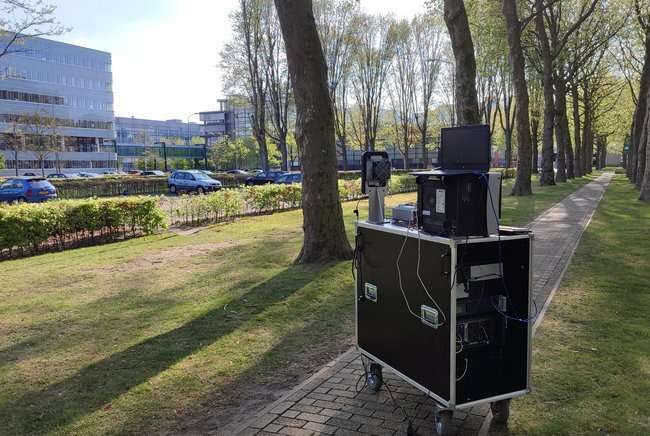Credit: Eindhoven University of Technology
For his Ph.D. research, Javier Perez Santacruz, researcher in the Electro-Optical Communications group, investigated whether mm-wave ARoF technology can be seen as a promising and suitable candidate to be part of the future 5G/6G infrastructure.
His thesis provides keynotes for standardization and realization. In addition, it helps pave the road for efficient and reliable mm-wave mobile communications.
Millimeter-wave frequencies crucial
Mobile communications have played and continue to play an important role in society, economy, culture, environment, and industry. However global demand forces further improvements in mobile communication technologies, with the utilization of millimeter-wave (mm-wave) frequencies being crucial.
Hence, future mobile generations (5G/6G) will exploit mm-wave bands with the challenges that this entails. In doing so, 5G/6G technologies will allow new disruptive services and applications such as virtual reality, remote surgeries, autonomous driving, or internet of things.
Sustainable technology
On the other hand, analog radio-over-fiber (ARoF) technology emerges as a highly efficient, sustainable, and low-cost technology to implement in the future mm-wave 5G/6G network. Nonetheless, ARoF brings several drawbacks that need to be addressed.
Thus, in this dissertation, different technologies and novel solutions to alleviate and solve the ARoF drawbacks are explained, compared, evaluated, and experimentally validated. Furthermore, in this dissertation, the key aspects to properly deploy an mm-wave ARoF system based on 5G/6G communications are exposed and highlighted.
More information: Analog Radio-over-Fiber for 5G/6G Millimeter-Wave Communications. research.tue.nl/en/publication … -wave-communications
Provided by Eindhoven University of Technology























